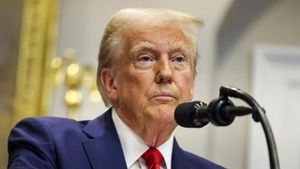The Union Budget 2025, presented by Finance Minister Nirmala Sitharaman, has laid out ambitious plans aimed at revitalizing India's economy at a time when it faces multiple challenges. By focusing on various strategic priorities, the government hopes to stimulate growth and encourage domestic consumption, which has been sluggish due to global economic fluctuations and local market dynamics.
Among the major announcements was the increase of income tax exemptions for salaried individuals earning up to Rs 12 lakh annually. This initiative is expected to put more money in the hands of the middle class, encouraging discretionary spending on consumer goods, two-wheelers, and travel—sectors significantly impacted by reduced demand. Addressing the need for fiscal prudence, the Finance Minister highlighted the tightened fiscal deficit target, now at 4.4% of GDP for FY26, reflecting the government’s commitment to maintaining macroeconomic stability.
Investment remains at the forefront of the budget's priorities, with the government increasing its capital expenditure allocation by 10% over previous estimates. This move is seen as strategically significant, stimulating private investment and enhancing infrastructure, which, according to economic experts, has far-reaching effects on employment and overall economic demand.
Both the Indian National Chamber of Commerce (CII) and the Federation of Indian Chambers of Commerce & Industry (FICCI) expressed optimism about the budget's direction. Manoj Gupta, chair of the FICCI UP State Council, remarked, "The Budget proposals will re-energise the economy by lifting the sentiments of the middle class and nudging the private sector to advance its investment plans as demand improves across sectors." This sentiment is echoed by industry leaders who believe the budget will lead to increased consumer confidence and spending.
To support Micro, Small, and Medium Enterprises (MSMEs), which are the backbone of the Indian economy, the budget has made provisions for doubling credit and term loan limits. This initiative is expected to ease working capital constraints and facilitate business expansion, particularly important as many enterprises struggle with financing amid global liquidity challenges.
Notably, significant reforms were also announced to streamline regulatory processes, which have long been seen as excessive hurdles for businesses. Plans to establish a high-level committee to review non-financial regulatory frameworks, coupled with the reduction of criminal liability across various legal provisions, reflect the government's intent to promote trust-based governance and alleviate bureaucratic pressures on entrepreneurship.
These measures come at a pivotal moment, as the budget aims to navigate the complex interplay of domestic and international economic pressures. With the targeted goal of achieving the vision of 'Viksit Bharat' by 2047, the budget emphasizes sustainable growth through long-term investment rather than short-term symptomatic relief.
Fueling consumer spending is critically important amid changing economic landscapes. The response from the market indicates cautious optimism; businesses are encouraged to seize the opportunities presented by these reforms and fiscal measures. Mayur Tandon from CII noted, "The Budget boosts MSMEs with greater financial flexibility...while tax relief for the middle class may increase disposable incomes and stimulate housing demand," highlighting the interconnectedness of these sectors.
The government’s commitment to enhancing the infrastructure development fund is also expected to bolster real estate and urban growth, which too has faced challenges recently. The allocation is poised to settle the many concerns about connectivity issues and urban development constraints—key areas for fostering growth.
Despite the broad positive outlook, the budget's execution will need continuous monitoring and adjustment to address the realities of changing economic conditions. Stakeholders from various sectors are watching closely to assess how effectively the government can implement these strategies to navigate potential global disruptions.
Lastly, the new government policies signal opportunities for sectors poised for growth, and it remains to be seen if the anticipated improvements will translate to tangible benefits for consumers and businesses alike. The budget, by addressing key areas such as infrastructure, investment, and consumption, lays down foundational blocks for India's future economic resurgence. Observers hope the private sector and consumers will step up to invigorate the economy with newfound optimism, propelling India toward its aspirational goals.



